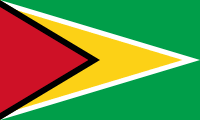
Insurance company in Guyana – World Insurance Company Logos. Research and compare coverages to identify the one that meets your requirements.

List of Insurance Company Logos in Guyana
Click on insurance company logos in Guyana for instant, up-to-date assurance information to choose the best coverage.
- All
Insurance Company Names
The document lists the names of insurance firms based in Guyana.
Noticias Today
Insurance company in Guyana
This section of the website is designed to offer insights into various facets of risk coverage oversight and to serve as a resource for industry professionals seeking to stay informed about the latest developments in regulatory supervision and guidance.
The primary objective of the Assurance Act is to safeguard policyholders by ensuring the integrity and stability of protection providers. This is achieved through multiple measures, including oversight of financial security institutions and the enforcement of proper management and ethical conduct. For example, the Act mandates the timely processing of claims and the fulfillment of reasonable customer expectations. Additionally, it extends its regulatory reach to other coverage intermediaries.
To enhance financial security for policyholder protection, the legislation requires providers to maintain sufficient reserves in trust for their clients. Furthermore, trustees responsible for these funds must submit periodic reports to the Commissioner, ensuring transparency and compliance. Off-site oversight is primarily conducted through rigorous reporting obligations, which allow regulators to monitor business activities and financial health.
The Act reinforces principles of sound corporate governance, empowers the regulatory authority to intervene when necessary, and provides mechanisms for the orderly dissolution of a risk coverage entity to safeguard policyholders’ interests.
Brokers, independent representatives, corporate agents, and all other intermediaries involved in protection services are also subject to regulatory oversight by the Commissioner.
In essence, the Act grants the Office of Coverage and Industry Regulation (OCI) the authority to oversee all aspects of risk management participation, ensuring financial stability, fair market practices, and the proper resolution of consumer concerns.
Guyana

Guyana lies on the northeastern coast of South America and borders Suriname, Venezuela, and Brazil. It includes two distinct areas: the coastal area and the interior (or rural interior). It comprises an area, of 215,000 km2 and is divided administratively into 10 regions.
Although the official language is English, at least eight other languages and dialects are also spoken.
Between 2010 and 2015, its population grew by only 7%; at times, the country has even experienced negative growth. Its population is multi-ethnic: Indo-Guyanese (40% of the total population), Afro-Guyanese (26%), Amerindian (11%), and ethnically mixed (20%). The Chinese, Portuguese, and white populations together constitute less than 1% of the total population.
Guyana’s population structure was expanded in 1990, but its population pyramid has become irregular, with certain age groups predominating as a result of various migrations. Life expectancy at birth was 66 years in 2014.
In 2015, per capita gross domestic product (GDP) was US$3,724. Agriculture, forestry, and the fishing and mining industries accounted for 28% of GDP.
Economy of Guyana
The main economic activities in Guyana are agriculture (production of rice and Demerara sugar), bauxite mining, gold mining, timber, shrimp fishing and minerals. Chronic problems include a shortage of skilled labor and a deficient infrastructure. In 2008, the economy witnessed a 3% increase in growth amid the global economic crisis, grew an impressive 5.4% in 2011 and 3.7% in 2012.
Until recently, the government was juggling a sizable external debt against the urgent need for expanded public investment. Low prices for key mining and agricultural commodities, combined with troubles in the bauxite and sugar industries, had threatened the government’s tenuous fiscal position and dimmed prospects for the future.
However, the Guyanese economy has rebounded slightly and exhibited moderate economic growth since 1999, thanks to an expansion in the agricultural and mining sectors, a more favorable atmosphere for business initiatives, a more realistic exchange rate, fairly low inflation, and the continued support of international organizations.
The sugar industry, which accounts for 28% of all export earnings, is largely run by the Co. Guysuco, which employs more people than any other industry. Many industries have a large foreign investment.
For example, the mineral industry is heavily invested in by the American Co. Reynolds Metals and the British-Australian Rio Tinto’s Rio Tinto Alcan subsidiary; the Korean/Malaysian Barama Co., has a large stake in the logging industry.
The production of balatá (natural, latex) was once big business in Guyana. Most of the Balata bleeding in Guyana took place in the foothills of the Kanuku Mountains in the Rupununi.
Early exploitation also took place in the North West District, but most of the trees in the area were destroyed by illicit bleeding methods that involved cutting down the trees rather than making incisions in them.
Uses of balatá included the making of cricket balls, the temporary filling of troublesome tooth cavities, and the crafting of figurines and other decorative items (particularly by the Macushi people of the Kanuku mountains).
From Wikipedia.
List of Insurance company Logos in Guyana – World Insurance Company Logos.

